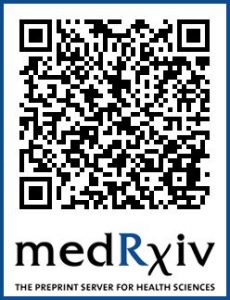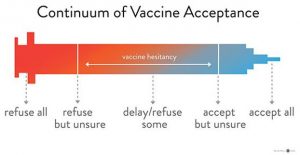Drs. Testa, President of MAHB, and Drs. Savoia and Piltch-Loeb, faculty in the MAHB Certificate Program, are all members of the Emergency Preparedness Research, Evaluation and Practice (EPREP) program and the Harvard TH Chan School of Public Health.
Note: Due to the urgent nature of these results for COVID-19 vaccination campaign planning, this paper is being released as a “pre-print”. This article has not been certified by peer review. It reports new medical research that has yet to be evaluated and so should not be used to guide clinical practice.
Abstract
Importance: Immunization programs are only successful when there are high rates of acceptance and coverage. While delivering billions of COVID 19 doses globally addressing vaccine hesitancy will be one of the most significant public health communication efforts ever undertaken. Objective: The goal of this study is to explore predictors of COVID 19 vaccine hesitancy, including socio-demographic factors, comorbidity, risk perception, and experience of discrimination, in a sample of the U.S. population. Design: We used a cross sectional online survey study design. The survey was implemented between Dec 13 and 23, 2020. Setting: The survey was limited to respondents over 18 years of age residing in the USA. Participants: Respondents were individuals belonging to priority groups for vaccine distribution. Main Outcome(s) and Measure(s): Respondents were asked how likely they would be to take a COVID 19 vaccine if offered at no cost within two months. Vaccine hesitancy was measured using a scale ranging from 1 (low hesitancy) to 6 (high hesitancy). Results: Responses were received from 2,650 respondents (response rate 84%) from all 50 states and Puerto Rico, American Samoa, and Guam. The majority were in the age category between 25 and 44 years (66%), male (53%), and working in the healthcare sector (61%). Most were White and non-Hispanic (66%) respondents followed by Black non-Hispanic (14%) and Hispanic (8%) respondents. Experience with racial discrimination was a predictor of vaccine hesitancy. Those reporting racial discrimination having 21% increased odds of being at a higher level of hesitancy compared to those who did not report such experience (OR=1.21, 95% C.I. 1.01-1.45). Conclusions and Relevance: Communication and logistical aspects during the COVID 19 vaccination campaign need to be sensitive to individuals past-experience of discrimination by identifying appropriate channels of communication and sites for vaccine distribution to reach those who may have sentiments of mistrust in the vaccination campaign.
Posted1/12/2021: Preprint Available — see more and obtain a copy of the preprint by clicking here or scan the barcode below with you smartphone or tablet.

